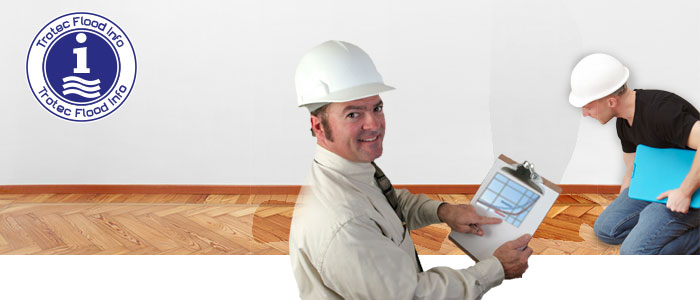
As we already explained you there are many things you can do on your own when renovating a water damage. But at the latest when insulating layers, hollow spaces or wooden floors are affected you need to ask a certified expert for advice. Even when superficial everything seems to be dry there can still be moisture under the layers.
When drying insulating layers or hollow spaces condensation and adsorption dryers alone are not enough because those machines can only dry surfaces. On the other hand it is absolutely necessary to dry the layers. Otherwise the moisture can cause a range of negative effects:
- Thermal insulation values and sound insulation values get lost
- Mineral insulations can disintegrate
- Mould and bacteria formation
- Efflorescence on natural stone floors
How does an expert solve that problem?
Fortunately, in most cases the insulation layer under the screed doesn’t have to be removed for drying. A certified company usually makes core drillings of about 50 mm Ø. One single drilling is enough to dry an area of 10 to 15 square metres. After that hoses are put into the wholes to suck the air out of the floor insulation with special side-channel compressors. After that the multiple-filtered air goes up into the room again where the drying devices dehumidify it. Thus, there is a continuous drying circulation that specifically reduces the moisture content of the floor insulation. Read more about water damage restoration and restorative drying here.
Can microfiber and mould spores get in the room air through the dehumidification?
No! When using the explained method – the expert calls it vacuum drying – the air vacuumed out of the floor insulation is filtered several times. One is a fine filter that filters fibres from mineral insulations, for example. If necessary after that the air is filtered by a HEPA filter (High Efficiency Particulate Airfilter) which filters mould spores, bacteria and micro fibres out of the vacuumed air.
What costs do I have to expect?
You cannot answer that question with just one sentence or price because the particular structural conditions are too diverse. The best solution is to let a certified company prepare an offer for you. An insulation drying usually is paid per square meter. Depending on flooring, insulation material and the individual loss situation there prices are between 16.- to 25.- Euros per square meter.
Trotec Flood Info: To inform you in any case of damage
We inform you about the following topics in detail:
- Trotec assists flood victims with expertise
- How long does a dehumidification take?
- Should I rent or buy a drying unit?
- Trotec Flood Info: The right moisture measurement after flood damages
- Trotec Flood Info: When do I need an expert?
- Trotec Flood Info: What to do when mould attacks?
- Trotec Flood Info: How to dry floor insulations
- Trotec Flood Info: What to do against the smell after the flood damage?
- Trotec Flood Info: The main facts about drying units

